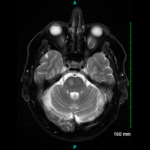In “Know Your Unknown Unknowns,” (October 2007 TR, p. 6), we asked for your thoughts on whether or not to administer steroids post-surgery for a woman with giant cell arteritis (GCA) of the aorta. (See patient description below). We’ve published a selection of those responses here, and we want to thank everyone who wrote in. Keep those letters coming!—The Editors
Mixed Views on Steroid Use
No doubt that steroids were needed in this case. The key question: Were the margins of the graft involved or free of giant cell inflammation? If the inflammatory process was extensive at the graft-tissue interface, I would be concerned about healing at the interface. If the interface was clear and the patient would be followed closely for amaurosis or other ominous symptoms, then I would be more likely to be patient on starting steroids. Do no harm.
The Patient
- Woman in her 70s with age-related medical conditions and ill-defined chest pain;
- Aneurysm of the ascending thoracic aorta treated surgically with a graft; and
- Pathologically diagnosed GCA of the aorta.
Now the question is how long does it take normally for an aortic graft-tissue interface to heal in a 70-year-old patient? We now know that atherosclerosis is an inflammatory process and that many of these grafts will go into an area of inflammatory atheromatous aorta—at times flagrantly inflamed. Yet from what I gather they usually heal. This patient may have had both giant cell aortitis and inflammatory atherosclerosis.
My guess is that steroids were held, the graft healed, and steroids were started later with no end point to follow. A PET scan can show active inflammation in giant cell aortitis and smaller arteries and may provide some additional information about extent and activity.
Robert Thoburn, MD,
adjunct clinical assistant professor of rheumatology,
University of Florida College of Medicine,
Gainesville
I hate to say that the surgeon is probably right and the rheumatologist wrong in this case. Why? The vasculitis (of the aorta) was found by accident (vague abdominal pains). No other stigmata of vasculitis whatsoever were found on physical or imaging examination. This was probably an isolated vasculitis of the aorta.
Therefore—although this sounds a bit weird—surgery could have cured her vasculitis, and steroids can be withheld.
On the other hand, if there were other symptoms, such as headache or blurred vision, or stigmata like elevated erythrocyte sedimentation rate (ESR) (which she did not have, we were told), then we’d have cause to seriously consider systemic therapy.

